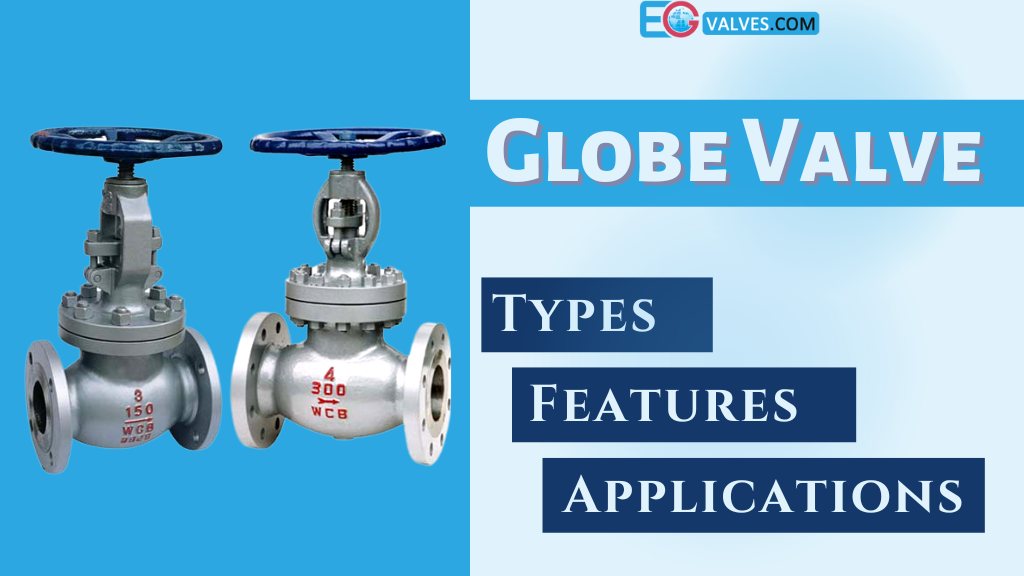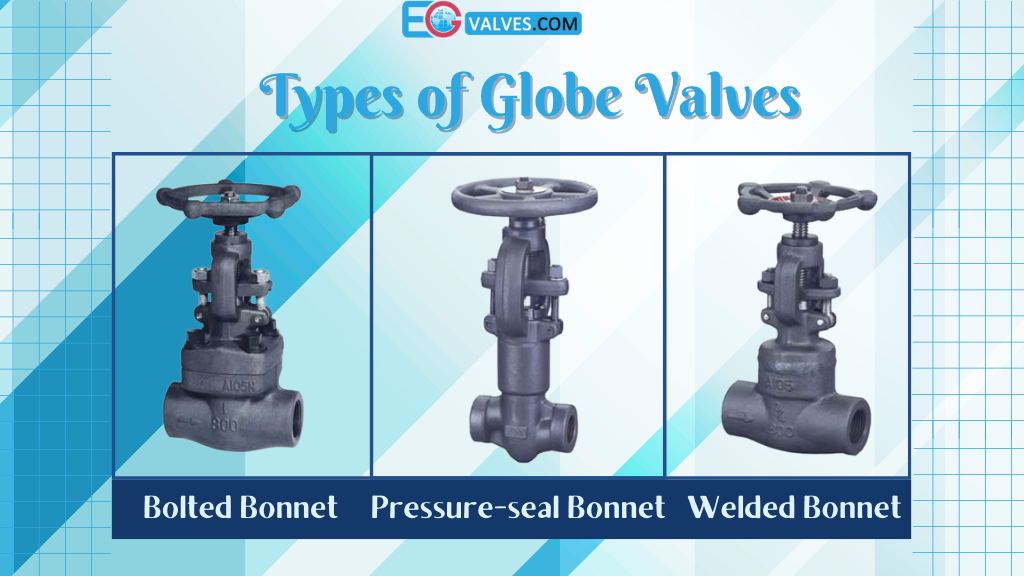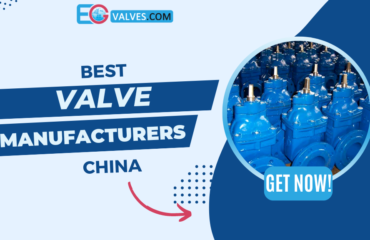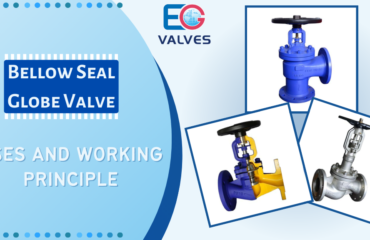Industrial valves are simple devices that are designed to control the fluid flow, including gases and slurries by blocking the passageway or pipes. Valves are commonly used in industrial processes, commercial settings as well as in domestic plumbing systems. There are many kinds of valves available with all these types designed to regulate or turn On and Off the flow of liquids or gases. For any specific application, choosing the perfect valve is a significant task for efficient performance. One of the popular valves in the industry is the Globe valve, which serves the basic function to shut the flow On and Off immediately.
The globe valve belongs to the top valve family and its functioning is almost similar to the gate valves. It uses linear motion to throttle flow and varies in its usage of a disk in place of the wedge.
The globe valves have a rounded body which is divided into two distinct halves that are separated by a disc that can be opened or closed when required. Unlike the other kinds of valves, the structural design of the globe valve is a bit more complex and it comprises the body, bonnet, stem, plug, seat ring, and cage.
Further, the globe valve is composed of a baffle with an opening that divides the inside of the pipe in accordance with the length of the pipe. A flat plug or disc is used in the seat or opening for the purpose to break down the flow inside the pipe. For the exterior part, the bonnet holds the stem that is being joined to the disc. On the upper, a part of the bonnet is the hand wheel that is utilized by oneself to screw down the stem with the disc at its end until the disc seals itself. Whilst a globe valve is used in many small or large industries, it is able to be closed, using a pneumatic, electric or hydraulic actuator rather than manually.
Often, these valves are referred to as throttle valves because of their characteristics to limit the flow inside the pipe. The extent, to which it passes the fluid, may be decreased by relocating the sealing disc halfway to the opening of the seat. Such valves can also be used in close with or oppose the liquid flow. While liquid flows in a similar path in the closing disc, the flow will help assist the closing of the seal which will make the opening more difficult. Whereas, the flow against the disc closure leads to the easy opening of the valve and difficulty while closing.
Components of Globe Valves
As its name suggests, the globe valve has a quite globe-type shape, with the valve stem, the disk, and the hand wheel as the moving parts of the valve body. Considering the application, it is possible to get the body in three different designs and types of disks. The rounded body and flow pipes provide easy system flow without creating any disturbance or noise. However, to avoid forming pressure loss at high velocity, the pipes should be in a constant area.
Seat
In the globe valve seating arrangement, there is either integration or screwed up into the body. The entire system provides a seal between the bonnet and stem and this is also known as the backseat. It prevents pressure from forming against the packing in the opening position of the valve.
The disk to seat ring connection sets close to the right angle, which minimizes the chances of seal leakage.
Actuator
This component operates the stem and disk in order to open and close the valve. Considering the needs of the system, there exist many kinds of actuators such as Manual/hand, Automatic and electric. Also, the speed of the actuators varies, and that should be selected in regard to the system and availability of energy to the actuator.
Electric actuators allow manual, automatic, and semi-automatic operation of the valve. Electric motors are reversible and useful for opening and closing functionality.
Whereas the Pneumatic actuator creates linear or rotary motion from a power source. For a variety of industrial applications, a pneumatic valve actuator is more reliable, affordable, and preferred over electric valve actuators.
Trim
In the globe valve, trim consists of the disk and the seat ring. It is enclosed within the valve body and located in the center of the valve and gets lowered with horizontal seating. The disk attached to the seat ring restricts the flow throughout the system. The disk for the globe valve is further divided into many kinds of arrangement; the most common types include the Ball type, Needle type, and composite type.
The ball type is designed to be used in low pressure and temperature systems. It helps to throttle flow, with the basic function to start or stop the flow.
In the Needle disk, the design provides better throttling in comparison to the other design types. It is easy to find many long tapered plug disks to match certain flow conditions.
Another one is the composition disk that is designed to achieve better shutoff. In this type, a hard, non-metallic insert ring is used.
Globe Valve Materials
When it comes to designing and manufacturing globe valves, different materials can be used such as metals, alloys, as well as plastics. The material selection can be made in accordance with the industrial application. Also, it is important to consider the type, construction, and temperature of the system and it is better to consult the service providers to choose the specific material in the valve.
Depending on the body type: Globe Valves are categorized into three types:
There are primarily three kinds of body types in Globe valves, such as angle design, Y-shaped, and Z-shaped.
Angle
In the Angle valves, the inlet and outlet are formed perpendicular to each other. They find their primary use in transferring fluid flow from vertical to horizontal. Being capable of handling the slugging effect, globe valves can also be used in the fluctuating flow condition.
Y-Body
Also popular as cross-flow globe valves, the Y-body design forms linear action from the incline between the axis of the inlet and outlet ports. This is the popular design in globe valves that minimizes the high-pressure drop in the valve. Both the stem and seat of the valve form a 45° angle with the media flow that allows linear flow at full opening. For many industrial applications, this design perfectly matches the high pressure and other essential services.
Z-Body
When it comes to the Z-body type, it is the simplest design available that is more often used for water applications. Its z-shaped diaphragm or partition across the body has the seat. Here, the seat is in a horizontal position with the disk and stem set perpendicularly to the pipe axis.
The passing steam through the bonnet is attached to the big opening at the top of the valve body. Bonnet acts as a solid covering for the body that helps retain the extra pressure.
Types of Globe Valves, according to the Body Bonnet Connection
Bolted Bonnet
One of the preferred designs to be used in globe valves is the bolted bonnet type. It needs a seal to form the connection between the valve body and the bonnet.
Welded Bonnet
This popular design is light-in-weight in comparison to its bolted-bonnet counterparts.
Pressure-seal bonnet
It best suits high-temperature and high-pressure applications. The push on the gasket is directly proportional to the body cavity pressure.
Screwed Bonnet
Unlike others, It has the simplest design and is quite useful for low-priced valves.
Advantages of Globe Valves
- Minimal fluid leakage
- Convenient adjustment to raise or lower flow
- Precise shutting mechanism
- Ideal to use in the high-pressure systems
- Easy operation by an automatic actuator
- Perfect for regular usage with no risk of wear of components
- Better shut-off capacity
- Easy installation in different layouts
- Ideal for throttling fluid flow in certain applications.
- Easy to repair
Globe valves deliver many benefits which makes them perfectly used in systems that require vacuum, and frequent stroking, and for systems that have a wide range of temperature extremes.
Features
Globe valves possess many features that ensure operational precision and safety.
Rangeability
Positioners in the globe valves help determine the opening or closing extent for throttling purposes. Usually, it is affected by three prime aspects including the valve geometry, the seat leakage, and the actuator’s accuracy. Seat leakage can lead to instability whereas, the geometry is integral as per the seat design. The enhanced range leads to the control of a greater range of flow rates that can be easily regulated by the valve.
Flow rate
What impacts the flow rate is the flow characteristic and the pressure drop across the valve. It can be precisely figured out by the lift of the valve plug from the seat and also by the linear position of the manual hand wheel.
Pressure
In usual conditions, the globe valve can handle pressure ranges from 1400 to 1500psi. This specific range depends directly on the construction material, size, and temperature. The greater pressure drop not only makes the system inefficient but also damages the trim, stem packing, and actuators.
Flow characteristics
The flow characteristics can be defined as the relationship between the valve stroke and the flow coefficient. It depends on the structural design of the valve. In the opening position, the characteristics permit flow passage through the valve at some percentage of the stroke. This factor is especially needed for the throttle control condition.
Flow coefficient
The valve flow coefficient determines the size that easily passes the desired flow rate, while at the same time providing stability in the controlling process. This factor can be used to make essential comparisons for the flow capacity of the valves in terms of type size and manufacturing. The flow coefficient varies for liquids, gases, and steam as its value depends directly on the pressure drop across the valve.
Valve size
Usually, the larger valves need high power and also they make the system noisy under high pressure.
Here, selecting the ideal size for the valve may bring complications. This is why valve manufacturing companies consider valve sizing in accordance with the buyer’s specifications or do involve software processing. Not only is it sufficient to try and match the size of the vessel nozzle or pipeline size, but also every piece of equipment should be examined to see whether it meets the minimum criteria.
Applications of Globe Valve
In industrial processes and systems, where flow control is needed, the use of globe valves is highly recommended. In high-point vents and low-point drains, globe valves ensure leak tightness and safety. As compared to other kinds of valves, globe valves maintain a solid shutting mechanism with much less receptive to leakage and faults.
- These kinds of valves indeed are the perfect preference to manipulate leakage troubles in residential and industrial locations. Commonly, the industrial applications for globe valves include cooling systems, chemical feed systems, feed water systems, turbine lube oil systems, and any other system where there is no concern for pressure drop.
- Globe valves are used in many applications wherein steady fluid glide is not necessarily required such as in chemical feed systems and turbine lube oil structures.
- Also, globe valves find their prime usage in process plants, power plants, and wastewater plants.
- In the lubrication systems, steam lines, and coolant pipes, globe valves are required to regulate the fluid flow.
- For commercial and residential buildings, where there is a requirement for the upstream fluid flow, globe valves remain in huge demand.
Final Words!
Industrial valves are of many types, with each following a different working principle and performing a different function. Among other valve types, the advantage of a globe valve is that it does not leak like others, and this is the reason, it is the most popular valve type used across serving different industrial applications.
To make sure the globe valves fitted in your piping systems deliver the best service, you should get them from a reliable industrial valve manufacturer. Connect with EG Valves Manufacturing Co. Ltd. to get the highest quality industrial globe valves that are built to last. They are reliable manufacturers and suppliers of premium quality industrial valves.





